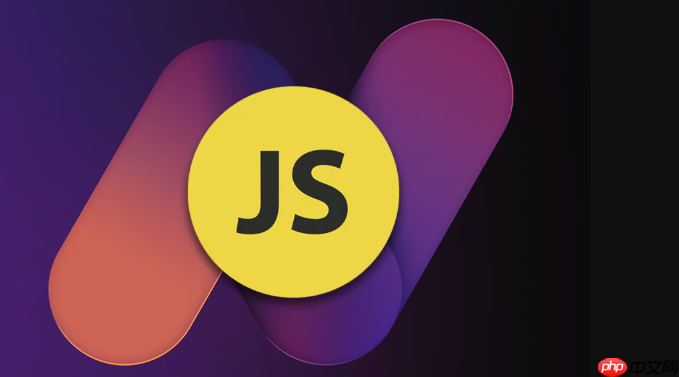答案:CSS自定义属性结合JavaScript实现动态主题,通过在:root定义变量并用JS切换类名或修改属性值,实现样式实时更新。核心优势包括集中管理、级联能力、性能优化和语义化命名;常见交互模式有直接设置变量、切换类名及响应系统偏好,最佳实践涵盖默认主题、可访问性和模块化设计;主要挑战为IE11不支持、调试复杂和变量冲突,可通过降级方案、命名空间和工具调试规避。

通过JavaScript结合CSS自定义属性实现动态主题,核心在于利用CSS自定义属性(通常称为CSS变量)作为样式的占位符,然后通过JavaScript动态地修改这些变量的值。这就像给你的样式表开了一个“控制台”,JavaScript就是那个操作员,能够实时调整页面上的视觉表现,而无需重新加载样式表或进行复杂的DOM操作。这种方式带来的灵活性和维护性,说实话,在现代前端开发中简直是福音。
要实现动态主题,我们首先需要在CSS中定义一些自定义属性。这些属性通常定义在
:root
:root
<html>
/* themes.css */
:root {
--primary-color: #007bff; /* 默认主题的主色调 */
--background-color: #f8f9fa; /* 默认主题的背景色 */
--text-color: #212529; /* 默认主题的文本颜色 */
}
/* 假设我们有一个暗色主题 */
.theme-dark {
--primary-color: #6610f2;
--background-color: #343a40;
--text-color: #f8f9fa;
}
/* 页面元素使用这些变量 */
body {
background-color: var(--background-color);
color: var(--text-color);
transition: background-color 0.3s ease, color 0.3s ease; /* 平滑过渡 */
}
button {
background-color: var(--primary-color);
color: var(--background-color); /* 按钮文字颜色与背景色互补 */
border: none;
padding: 10px 15px;
cursor: pointer;
transition: background-color 0.3s ease;
}接着,JavaScript就登场了。它可以通过操作根元素的
style
element.style.setProperty(propertyName, value)
// theme-switcher.js
// 获取HTML根元素
const rootElement = document.documentElement;
// 假设我们有一个切换主题的按钮
const themeToggleButton = document.getElementById('theme-toggle');
// 从localStorage获取用户之前选择的主题,如果没有则默认为'light'
let currentTheme = localStorage.getItem('theme') || 'light';
// 应用初始主题
applyTheme(currentTheme);
function applyTheme(theme) {
if (theme === 'dark') {
rootElement.classList.add('theme-dark'); // 添加暗色主题类
// 也可以直接设置变量,但通过类名切换更推荐,因为CSS可以管理更多状态
// rootElement.style.setProperty('--primary-color', '#6610f2');
// rootElement.style.setProperty('--background-color', '#343a40');
// rootElement.style.setProperty('--text-color', '#f8f9fa');
} else {
rootElement.classList.remove('theme-dark'); // 移除暗色主题类
// rootElement.style.setProperty('--primary-color', '#007bff');
// rootElement.style.setProperty('--background-color', '#f8f9fa');
// rootElement.style.setProperty('--text-color', '#212529');
}
localStorage.setItem('theme', theme); // 保存用户选择
currentTheme = theme;
}
// 绑定按钮点击事件
if (themeToggleButton) {
themeToggleButton.addEventListener('click', () => {
const newTheme = currentTheme === 'light' ? 'dark' : 'light';
applyTheme(newTheme);
});
}
// 监听系统偏好设置(可选,但强烈推荐)
const prefersDarkScheme = window.matchMedia('(prefers-color-scheme: dark)');
function handleSystemThemeChange(e) {
if (!localStorage.getItem('theme')) { // 只有在用户没有明确选择主题时才响应系统偏好
applyTheme(e.matches ? 'dark' : 'light');
}
}
prefersDarkScheme.addEventListener('change', handleSystemThemeChange);
// 首次加载时也检查一次系统偏好
if (!localStorage.getItem('theme')) {
handleSystemThemeChange(prefersDarkScheme);
}这种通过添加/移除类名来间接控制CSS变量的方式,在我看来,比直接用JS设置每一个变量要优雅得多。它把主题的逻辑更多地留在了CSS里,JS只负责切换状态,这样分工更明确,也更符合关注点分离的原则。
立即学习“Java免费学习笔记(深入)”;
说实话,CSS自定义属性在主题管理方面,简直是开挂一般的存在。以前我们怎么做?要么是JS直接操作元素的
style
element.style.backgroundColor = '...'
自定义属性的妙处在于:
:root
--primary-color
--text-on-dark
在实时更新样式这个场景下,JavaScript和CSS自定义属性的互动方式其实挺有意思的,有几种模式,每种都有它适用的地方。我个人觉得,选择哪种模式,主要看你的主题切换逻辑有多复杂。
直接操作根元素变量(document.documentElement.style.setProperty
document.documentElement.style.setProperty('--variable-name', 'value');localStorage
通过切换类名或数据属性(classList.add/remove
setAttribute
theme-dark
data-theme="dark"
<html>
<body>
theme-dark
data-theme="dark"
transition
结合系统偏好(window.matchMedia
prefers-color-scheme
localStorage
无论哪种模式,有一些通用的最佳实践值得注意:
--color-primary-text
--spacing-medium
--blue
--margin-10px
虽然CSS自定义属性很强大,但在实际项目中,也不是一路坦途,总会遇到一些小麻烦。我个人在踩过一些坑之后,总结了几个点:
IE11这个老伙计:
@supports
postcss-custom-properties
变量调试有点绕:
性能考量(通常不是大问题,但值得一说):
过度依赖JavaScript:
变量冲突与覆盖:
--component-name-primary-color
.card
总的来说,CSS自定义属性是构建动态主题的绝佳工具,它让前端开发变得更加灵活和高效。只要我们理解它的工作原理,并注意一些潜在的“坑”,就能把它用得炉火纯青。
以上就是如何通过JavaScript的CSS自定义属性实现动态主题,以及它如何与JavaScript交互实时更新样式?的详细内容,更多请关注php中文网其它相关文章!

每个人都需要一台速度更快、更稳定的 PC。随着时间的推移,垃圾文件、旧注册表数据和不必要的后台进程会占用资源并降低性能。幸运的是,许多工具可以让 Windows 保持平稳运行。

Copyright 2014-2025 https://www.php.cn/ All Rights Reserved | php.cn | 湘ICP备2023035733号